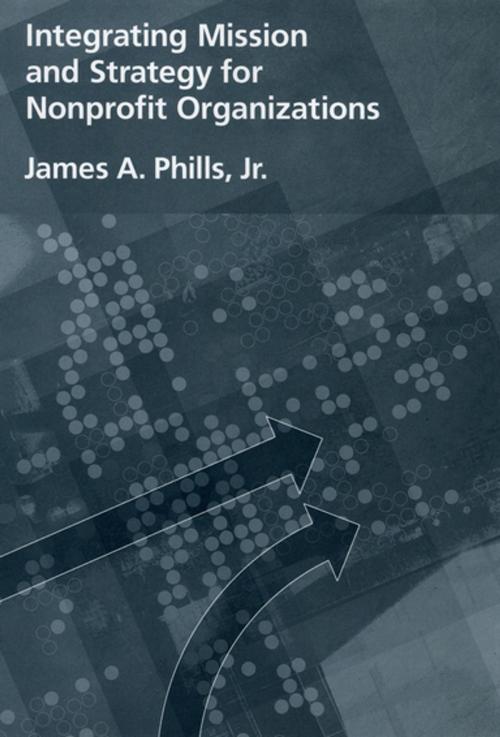Integrating Mission and Strategy for Nonprofit Organizations
Business & Finance, Industries & Professions, Nonprofit Organizations & Charities, Human Resources & Personnel Management, Organizational Behavior, Management & Leadership, Leadership| Author: | James A. Phills, Jr. | ISBN: | 9780199883707 |
| Publisher: | Oxford University Press | Publication: | July 21, 2005 |
| Imprint: | Oxford University Press | Language: | English |
| Author: | James A. Phills, Jr. |
| ISBN: | 9780199883707 |
| Publisher: | Oxford University Press |
| Publication: | July 21, 2005 |
| Imprint: | Oxford University Press |
| Language: | English |
Today's nonprofit organizations face an environment characterized by higher levels of competition for funding, clients and audiences, talent, and recognition. In addition, they confront greater pressures from donors, government, and the public to demonstrate efficiency, effectiveness, sustainability, and accountability, while intense social needs and problems, as well as the desire for growth, drive them to expand their programs and activities. Collectively, these challenges go to the heart of fundamental issues of mission and strategy. Integrating Mission and Strategy for Nonprofit Organizations applies and adapts the core body of general management knowledge about mission, strategy, and execution to help nonprofit leaders deal with the special challenges they face. It strives to draw on this knowledge in a way that does not dilute or oversimplify, and at the same time recognizes the unique features of the nonprofit or voluntary sector. James A. Phills develops an action-oriented framework that combines rigorous analysis with the practical challenge of execution and change. In addition to helping nonprofit leaders think through important decisions and make concrete choices, the book also provides a shared language and a discipline that can serve as the basis for more productive discussions between the individuals who lead nonprofits, the business executives who serve on their boards, and the philanthropists who support their organizations and programs. This last objective is critical, because too often nonprofit leaders and board members complain that they can't reap the benefits of the expertise of their supporters, funders, and volunteers from the business sector. Phills suggests that this is often the result of an inability to speak the same language and draw on a common understanding of key concepts, such as competition, strategy, and vision.
Today's nonprofit organizations face an environment characterized by higher levels of competition for funding, clients and audiences, talent, and recognition. In addition, they confront greater pressures from donors, government, and the public to demonstrate efficiency, effectiveness, sustainability, and accountability, while intense social needs and problems, as well as the desire for growth, drive them to expand their programs and activities. Collectively, these challenges go to the heart of fundamental issues of mission and strategy. Integrating Mission and Strategy for Nonprofit Organizations applies and adapts the core body of general management knowledge about mission, strategy, and execution to help nonprofit leaders deal with the special challenges they face. It strives to draw on this knowledge in a way that does not dilute or oversimplify, and at the same time recognizes the unique features of the nonprofit or voluntary sector. James A. Phills develops an action-oriented framework that combines rigorous analysis with the practical challenge of execution and change. In addition to helping nonprofit leaders think through important decisions and make concrete choices, the book also provides a shared language and a discipline that can serve as the basis for more productive discussions between the individuals who lead nonprofits, the business executives who serve on their boards, and the philanthropists who support their organizations and programs. This last objective is critical, because too often nonprofit leaders and board members complain that they can't reap the benefits of the expertise of their supporters, funders, and volunteers from the business sector. Phills suggests that this is often the result of an inability to speak the same language and draw on a common understanding of key concepts, such as competition, strategy, and vision.















